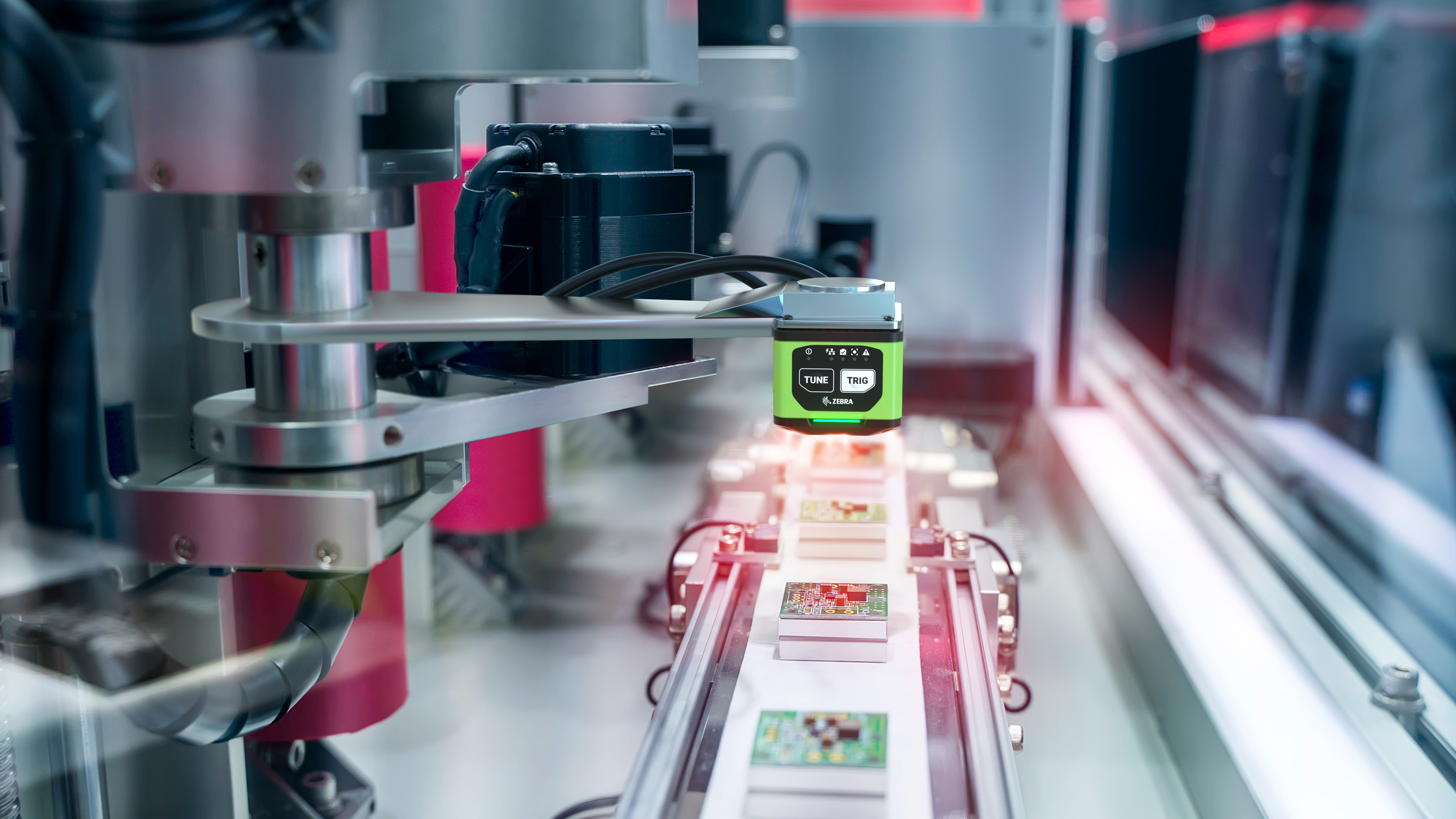Machine Vision: What Is It?
Machine vision (MV) uses computer vision in industrial applications and processes, where it is necessary to execute a specific action or outcome based on the image processing and image analysis done by the vision system. Machine vision utilizes both hardware and software to help guide operations, relying on the images that are captured by the system. The machine vision system can process, analyze, and measure distinctive characteristics of the subject from the image capture. The information from the digital image is then used by the system for decision-making. Essentially, machine vision gives a system the ability to perceive the environment and perform objective measurements and decisions, which is why this technology is helpful and highly sought after by companies for executing industrial tasks reliably and consistently.
What Can Machine Vision Be Used For?
Machine vision can be used in many industries, from manufacturing to healthcare. Although machine vision is a technology that has been around for decades, it is only relatively recently that it can be used in a wide variety of applications. Machine vision allows industrial equipment to see and detect features or flaws, providing operational guidance to devices. The machine vision system can then use the acquired images to make fast decisions based on what it sees. Many companies rely on machine vision for visual inspection, process control, material inspection, and more.
Today, machine vision systems play an integral part in an inspection system and vision process, especially in industrial applications that require some type of visual feedback. Machine vision systems can be used for things like detecting defects in objects, identifying objects, tracking objects, sorting products, recognizing patterns and colors, pass or fail detection, and more.
With continuing advances in technology such as machine learning, deep learning, and more robust software, the future of machine vision is filled with many possibilities and an increasing number of applications that were not possible before.
To learn more, read about Machine Vision VS Computer Vision.
How Does Machine Vision Work?
1. Machine Vision Works By Using A Combination of Hardware, Software, and Electronic Components
Machine vision systems use hardware like cameras to see, along with using software to trigger various actions based on the analysis of an image. There is advanced machine vision software available today to help create custom machine vision applications depending on business needs and software technology to help monitor and manage machine vision systems.
2. Machine Vision Technology Uses Information that is Extracted from Digital Images to Make a Decision
Think of machine vision systems as a way to give industrial equipment the ability to see, analyze what it sees, and act based on that analysis. To properly see and detect objects, machine vision systems often require good lighting. This can involve placing a light source in a strategic way with respect to the camera of the machine vision system. When the image is processed, systems can be programmed to act a certain way depending on the criteria set. If machine vision detects a flaw, then the system can be programmed to exclude that specific item from the manufacturing line.
3. Continuous Innovation of Machine Vision Provides More Flexibility and Bigger Automation Possibilities
Today, machine vision is widely accepted for many applications, including quality control and automated inspection. This is because advances in technology have led to increased applications being solved using machine vision. These include process control and optical sorting, which includes removing undesirable stuff from bulk material. Other applications include robotic movement, which involves the positioning and orientation of items to be picked up by a robot arm.
How Accurate is a Machine Vision System?
The accuracy of a machine vision system depends on the camera's resolution, the field of view, and the size of the object/s that the system is inspecting or monitoring. We need to account for whether the system is looking at something which is the size of a postage stamp or a large piece of equipment (or something even larger, like a football field), all of which can affect the accuracy of the machine vision system.
For example, if you are using a system on a large football field, the accuracy would be less accurate than if you are looking at an object in a tiny field of view, such as a postage stamp.
An additional consideration is the camera's resolution, how many pixels are there to be able to resolve that image? The camera is looking for contrast changes within the pixels themselves, if a neighboring pixel changes brightness levels or the intensity changes, this can become a threshold, and then you can use interpolation software to increase the accuracy of the identification.
What is the Difference Between Machine Vision and Human Vision?
Human vision requires coordinating the eyes and the brain. Machine vision uses cameras and software to see, identify, distinguish, and classify items by size, color, or patterns using image capture. Human vision shines when it comes to qualitative interpretation of something complex and unstructured, and associating images with emotions. In contrast, machine vision shines when it comes to quantitative measurement of a structured environment. This is because of the machine vision system’s speed, accuracy, and repeatability, which the average human vision may not be able to keep up with.
How Quickly Can Machine Vision Systems Detect an Object or a Defect?
How fast machine vision systems can detect an object, features, or defects comes down to 3 core items that go hand in hand in terms of capturing and then processing:
1. The frame rate of the camera
2. The processing capabilities
3. The complexity of the job
The frame rate of the camera refers to how many frames per second it can capture. Once the image is captured, intelligence starts to analyze the image, which is where the system's computer vision comes into play.
The processing capabilities also play a major part, and this can depend on the complexity of the system and how it is being used. For example, are you using machine vision to measure an object/s? Are you checking for defects where it must compare a captured image to several other images that are within its database?
Nowadays, smart cameras are incredibly sophisticated, and IT (Information Technology) architectures are becoming more elaborate with the power of capturing, pre-processing, and processing all becoming more intelligent.
How Close or Far Can a Machine Vision System See When It Is Detecting an Object?
The distance that a machine vision system can see depends on a combination of optics, illumination, resolution, and the aperture of the camera system, all of which are interchangeable depending on the type of setup that is required.
The depth of field and focus affect how effectively a camera can image an object(s). For example, in a large depth of field which is what is in focus and what is not (everything that is in focus is your depth of field). For example, to get a large depth of field, this will require significant illumination and a lower aperture (as small as it will go), with most applications, this will give you a large depth of field. Therefore, lighting and illumination are incredibly important in several applications. This also has a lot to do with the resolving power and quality of the optics.
What are the Different Types of Machine Vision?
There tend to be two types of machine vision: the first type is a smart camera which is a combination of hardware and software in one “body” within one piece of self-contained hardware. Smart cameras are more prevalent across the market, but they do have limited capacity as the processing hardware is fixed.
Another type of machine vision is a vision system that uses a “dumb” camera connected to a controller, a PC or industrial PC, or a dedicated platform that a company may have created. These types of machine vision systems are more flexible. They are more tuned for specific functions, high-end applications, and more challenging tasks beyond the capability of a smart camera.
How is Machine Vision Useful in an Automated Inspection?
1. Machine Vision Can Increase the Product Quality that Gets Released to the World and Can Help Reduce Costs
Machine vision systems that are utilized for inspection help identify features or detect object defects, functional flaws, and physical irregularities in products, especially in manufacturing. For example, machine vision systems can be used to inspect bottles or containers and detect the presence of flaws. This helps increase the overall product quality that gets put out there outside of the manufacturing facility or factory.
2. Machine Vision Technology Helps Optimize Operations and Reduce Human Error
Human eyes can get tired after performing tedious inspection tasks over time. This can lead to an increase in errors. On the other hand, machine vision does not have this problem. Automated machine vision systems tend to be more accurate, reliable, and tireless for executing inspections that require the same tasks. This decrease in human error and increase in the speed of specific tasks can help reduce costs, both in terms of money and time.
What are the Typical Applications With Machine Vision?
Quality inspection and control are generally the biggest applications. Machine Vision systems can also replace human operators who could be performing manual inspections. Here are other top applications and functions of machine vision systems:
1. Overhead Hands-free Scanning
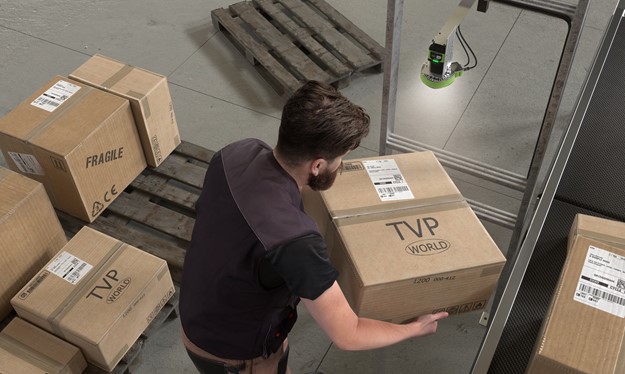
A fixed scanner can read 1D/2D code(s) on a product while the operator manually presents the product to the scanner.
2. In-Motion Tracking with Inline Scanning
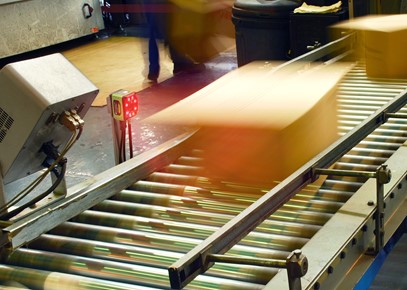
A fixed scanner can read 1D/2D code(s) while a product or parcel moves on a conveyor belt.
3. Ensure Label Presence and Quality
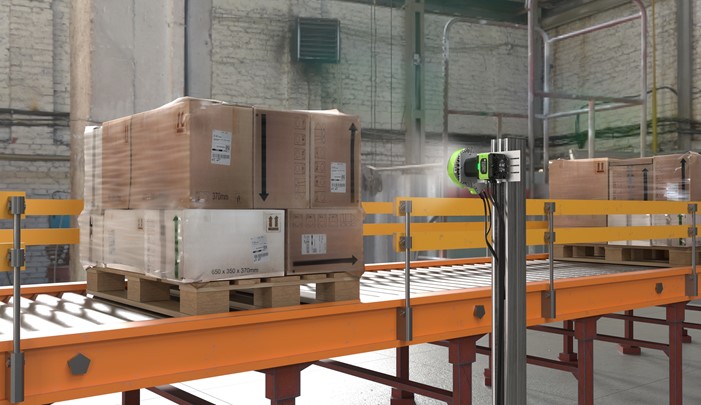
A fixed scanner can read 1D/2D code(s) directly after printing a label.
4. Confirm Label Presence and Placement
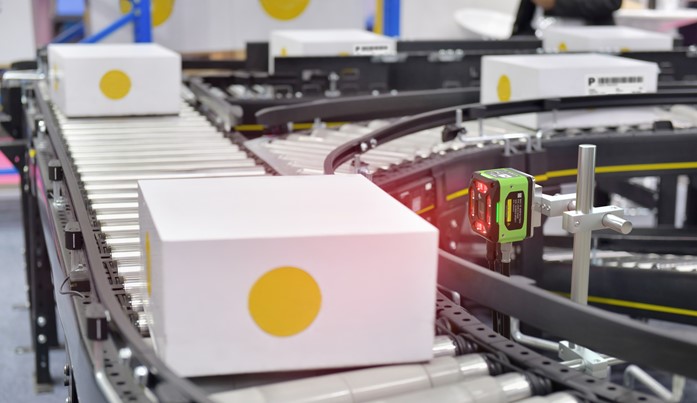
Machine Vision Systems can check for the following:
- Correct pre-printed label (Printing Supplies)
- Correct positioning of the label
- Sortation based on the courier logo
5. Label Integrity (Object Detection)
The system can perform a quality check whereby it checks for the presence/absence of print (print quality). In terms of functionality, a trained Model (shape or logo) must be located within the Search Region and the inspection will pass when the Model is present within the Search Region. These tools can also measure the Brightness or perform a Pixel Count and use a set of limits to set the inspection criteria. Products that exceed these limits will fail.
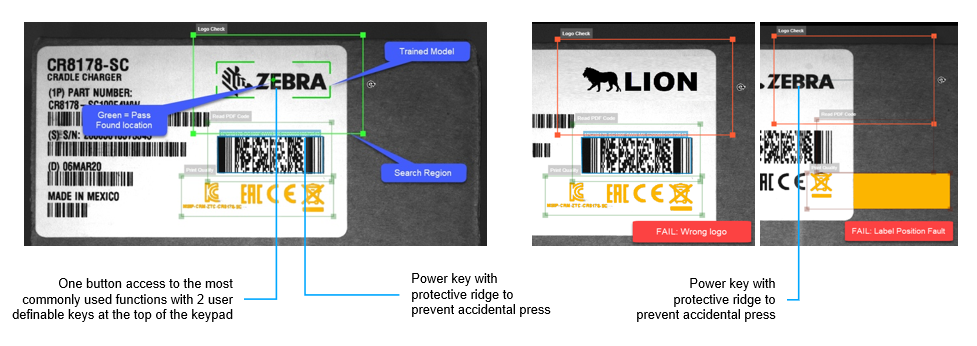
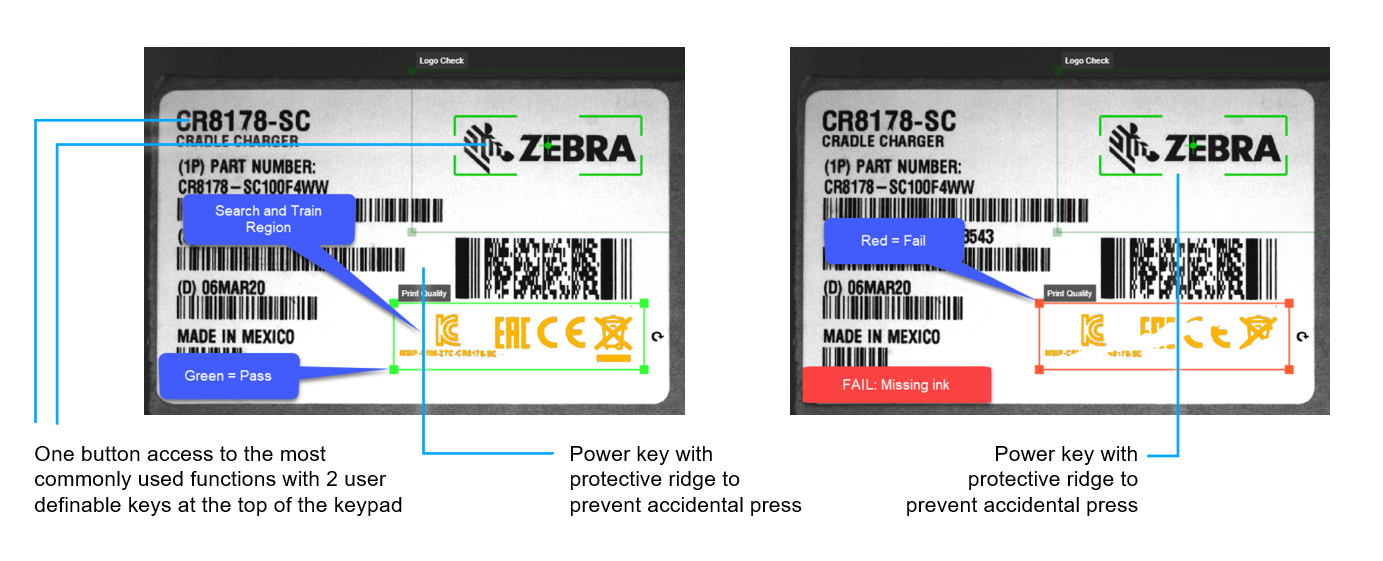
6. Assembly Verification (Presence/Absence Detection)
A vision camera checks visual if all components of an assembly are present for manual and automated assembly. This helps to improve quality along with improving productivity and efficiency via a fast and higher throughput.
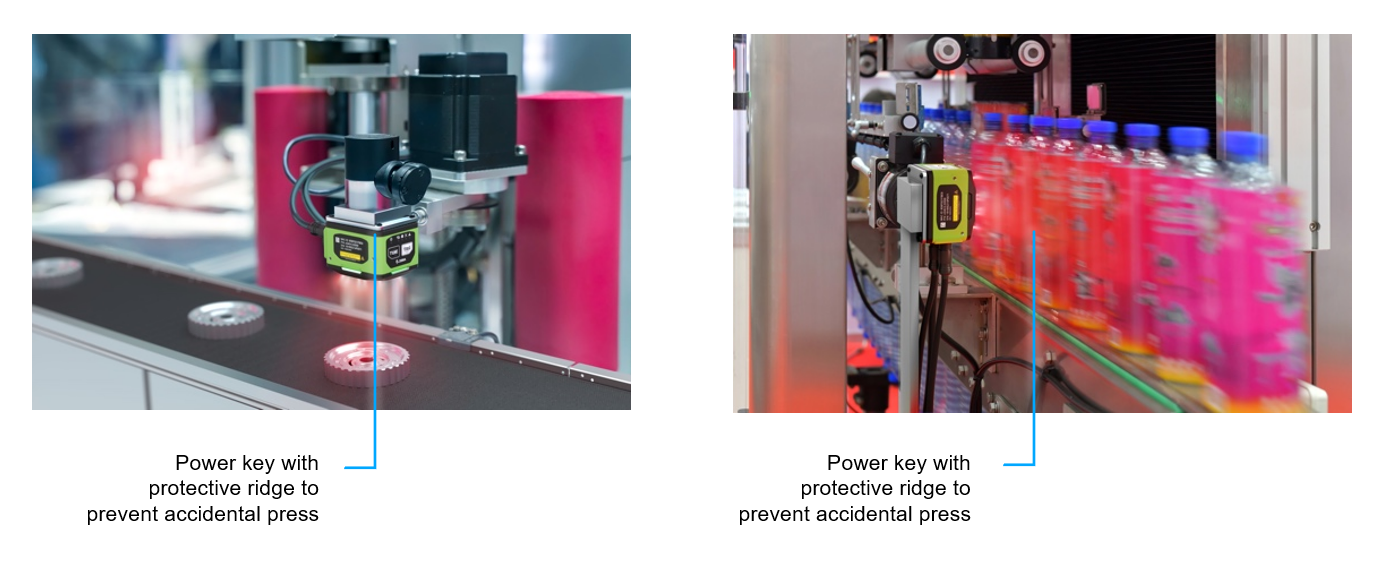
What are The benefits of Machine Vision?
The benefits of machine vision systems include:
- Reducing human interaction and inspection from a process
- Speed – on average, a camera can inspect parts much faster than a human can
- Consistency of inspection – machine vision provides more consistency compared to human inspection
- Ability to sustain a high level of inspection compared to humans (who, whilst still part of the process, may only be able to do it for a short period of time)
- Automating processes – reducing interaction between humans and machines
- Alongside this, you are also getting data from the images so you can understand. For example, if you are making a part that is 2 inches long and the production fluctuates between 2.25 inches and 1.75 inches, the system can learn and understand what is happening through the data that is produced and available. This is key to fully understanding what is going on in your processes to making that particular part. This provides automated data points and millions of data points on your products.
- Improve inspections, reduce costs, improve quality and remove the human element of Manufacturing
- Machine vision solutions give customers more flexibility with their operations
- A machine vision camera can read both 1D and 2D codes and do quality verification, part presence, and orientation; product defect detection; color inspection; and other visual inspection processes
- Machine vision systems can recognize text (OCR), handwriting (ICR), barcode (OBR), and optical mark (OMR)
- Computer vision, whether used with robots or in quality control systems in manufacturing processes, can process images or video and initiate appropriate actions
- With these capabilities, computer vision systems can conduct a wide range of tasks, well beyond that of barcode reading
- Machine vision can know what is in a standard cardboard box, carton, or other containers, so it is good for applications where the packaging has distinguishing characteristics
- It can determine sizes or styles, making it effective in many retail applications

